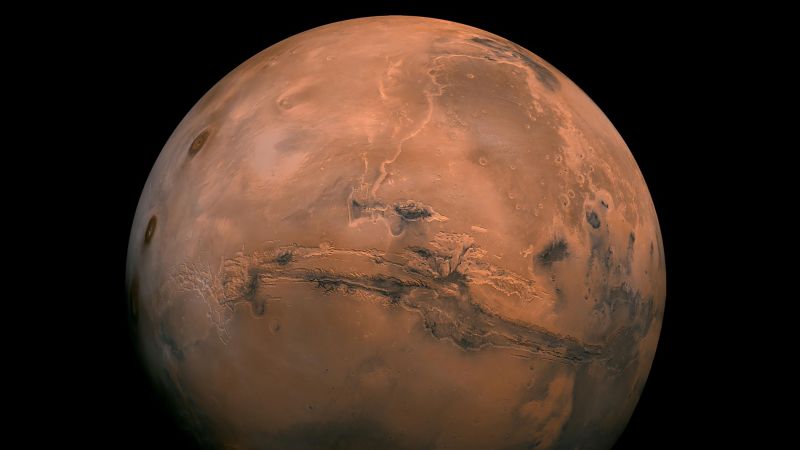In recent research highlighted by CNN, scientists have raised significant concerns about the presence of toxic dust on Mars and its potential implications for astronauts undertaking future missions to the red planet. A study published in the journal GeoHealth has identified various hazardous materials within Martian dust, including silica, gypsum, perchlorates, and nanophase iron oxides, all of which pose serious health risks to human explorers.
A principal danger from the Martian dust is its impact on the respiratory system. According to Justin Wang, a medical student at the Keck School of Medicine at the University of Southern California and co-author of the study, the fine particulate nature of Martian dust could lead to retention in astronauts’ lungs, with some particles potentially being absorbed into the bloodstream. This poses a heightened risk of pulmonary diseases, especially since astronauts already face increased susceptibility to conditions such as pulmonary fibrosis due to radiation exposure during spaceflight.
Furthermore, certain components of the dust, particularly perchlorates—which have been detected at troubling levels in Martian soil—could lead to significant health issues such as thyroid dysfunction and aplastic anemia, a medical condition where the body fails to produce adequate blood cells. With this knowledge, the study emphasizes the necessity for extensive measures to mitigate dust exposure in order to ensure astronaut safety.
Mitigating the risks associated with Martian dust will involve proactive strategies including improved dust filtration systems, rigorous cabin cleaning protocols, and innovative technologies like electrostatic repulsion devices that aim to keep the environment as dust-free as possible. Despite the challenges, Wang remains optimistic, asserting that the dangers posed by dust can be managed with appropriate preparations, making a Mars mission feasible rather than impossible.
Beyond the direct risks to astronauts, the implications of Martian dust extend to the functionality of equipment and technology designed for exploration. Brian Hynek, a professor of geological sciences at the University of Boulder and co-author of the study, emphasized that the pervasive nature of Martian dust could severely affect the operation of spacecraft, rovers, and equipment. He noted that previous missions have already faced losses because instruments were compromised by dust accumulation on solar panels, preventing effective charging.
Julia Cartwright, an independent research fellow at the University of Leicester, elaborated on the unique properties of Martian dust, explaining its dangerous sharpness compared to Earth’s more rounded and worn dust. The critique parallels the dangers of asbestos exposure, as sharp particles can irritate sensitive lung tissues. Issues surrounding air filtration in spacecraft are also raised, highlighting the urgency of developing strategies to protect astronauts from toxic compounds such as chromium, arsenic, and cadmium present in Martian dust.
The responses from experts in various fields underline the interdisciplinary nature of tackling the challenges posed by Martian dust, necessitating collaboration across scientific, medical, and engineering domains. Jonathan Eastwood, a professor of space physics at Imperial College London, reinforced the importance of local medical capabilities, as the distance between Earth and Mars complicates rapid evacuation in emergencies.
Zavina-James, a senior research manager at the UK Space Agency, indicated that understanding the health risks of space exploration, particularly regarding Mars, is paramount. She expressed optimism about the ongoing research efforts that address the health aspect of human space endeavors, emphasizing the ethical implications of sending astronauts to a potentially hazardous environment like Mars.
In conclusion, while the prospects of exploring Mars are exciting, the implications of the toxic Martian dust present significant challenges for future missions. The need for thorough research and the development of advanced protective measures are essential to safeguard astronauts’ health and ensure the success of space exploration endeavors within our solar system.












